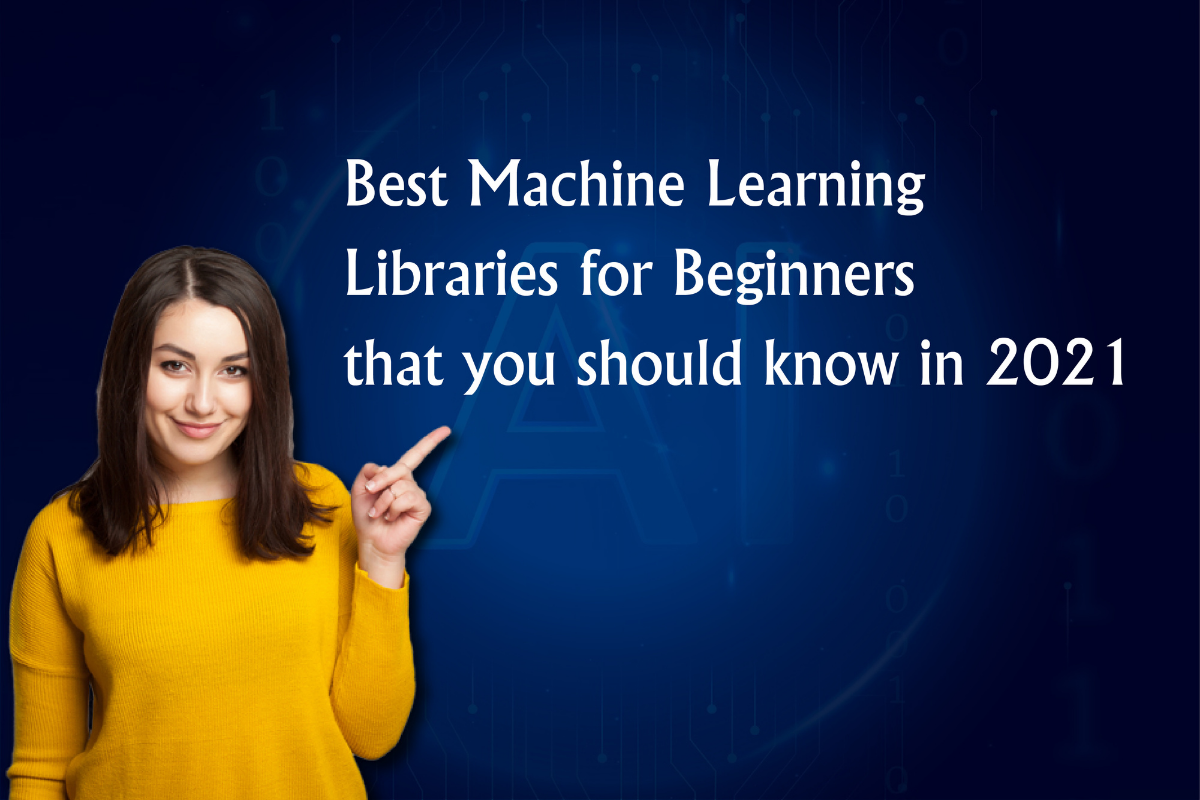
Nowadays, there is no doubt that Machine Learning has been one of the most trending & interesting topics in the tech area. Machine Learning and AI are implementing across various industries and most enterprises have started investing in these technologies. AI and Machine Learning offers more accurate insights and help in enhancing the business efficiency with lower production cost to improve productivity. The reason for this popularity is because IT professionals are giving more attention to these technologies.
So basically today we are exploring Machine Learning Libraries for Beginners that you should know in 2021.
Numpy is one of the most significant Python packages for Machine Learning. A number of matrix operations are used in scientific computations. And these operations can be very heavy on computation. Naively applying them can easily lead to inefficient use of memory.
Numpy arrays are a special class of arrays that within milliseconds do these operations. In the C programming language, these arrays are implemented. A single matrix may have millions of numbers for tasks such as Natural Language Processing, where you have a wide range of vocabulary and hundreds of thousands of sentences. In addition, the NumPy Python package performs Scientific computations. In handling sound waves, images, and other binary functions, it is commonly used. You have to learn the use of this library as a beginner.
Tensorflow is an open-source library developed by Google and considered one of the best libraries available today for Python machine learning, making it easy for newbies and experts alike to model building. A web-based visualisation tool called the Tensorboard is available in the TensorFlow library, which enables devs to visualise model parameters, gradients, and performance. Frameworks such as TensorFlowLite and Tensor Flow Serving are supported by the DL library to readily deploy ML models. The interesting thing about Tensorflow is that you can compile and run on either your CPU or GPU when writing a programme in Python. So, to run on GPUs, you do not have to write at the C++ or CUDA level.
Pandas is the Microsoft Excel equivalent of Python.You should consider using Pandas to deal with it whenever you have tabular data. The good thing with Pandas is that it’s just a matter of a few lines of code to do operations. You can read data from a wide variety of sources using this library, such as CSV, SQL databases, JSON files, and Excel.
Pandas also have a long list of pre-existing commands that will save ML developers from adding code for different operations in mathematics. In addition to data manipulation, the Pandas library also helps to transform and visualise the same thing.
Keras is an open-source library that runs on both the CPU and GPU efficiently. It is used, specifically for neural networks, for deep learning. Keras makes it easy for beginners in machine learning to design and create a neural network. Keras Python also deals with neural network convolution. It involves algorithms for layers of normalisation, optimizer, and activation. Keras acts as a user-friendly, extensible interface that improves modularity and complete expressiveness instead of being an end-to-end Python machine learning library. It is an application programming interface (API) for high-level neural networks that can run on top of TensorFlow, CNTK, or Theano. For beginners, Keras is the best method for creating and developing neural networks. Keras also allows prototyping to be simple and fast.
One of the most common ML libraries is Scikit-learn. In This many supervised and unsupervised learning algorithms are supported. For instance, Linear and logistic regressions, decision trees, clustering, k-means, and so on. This builds on the two basic Python, NumPy, and SciPy libraries. It adds a collection of algorithms, including clustering, regression and classification, for common machine learning and data mining tasks. In a few lines, even tasks such as data transformation, feature selection and ensemble methods can be implemented. Scikit-learn is also suitable for data processing and data mining, making it the best instrument for beginners in machine learning.
Theano is a popular quickly and efficiently machine Learning Liabrary. It evaluates, and optimizes mathematical expressions and Matrix calculations. Theano can work on the architectures of both the CPU and GPU, working on the latter results more quickly. It is also commonly used, as it detects and diagnoses various types of errors, for unit-testing and self-verification. Theano is an incredibly powerful library that is well-suited for large-scale, long-range, computer-intensive science projects.
PyTorch where Py represent python, is a one of the leading open-source Python machine learning library based on Torch and it was developed by Facebook.This library absorbs powerful GPU acceleration from applications such as NLP and allows you to apply it. It provides you with performance enhancement and scalable distributed training in research as well as development as it supports GPU and CPU computations. The two high-end features of PyTorch are deep neural networks and Tensor computation with GPU acceleration. It includes a compiler for machine learning named Glow that improves the efficiency of deep learning frameworks.
This is a list of the most important libraries for Machine Learning, as it saves time and provides explicit functions that you can build on. When you become familiar with the underlying principles of libraries, you can quickly swap out or extend to other available alternatives. With the help of these ML libraries, you can work on high-level analytical functions, even with minimal knowledge of the underlying algorithms that you are working with.
Powered by "WordPress" Theme: powered by:WordPress Design By "WordPress"